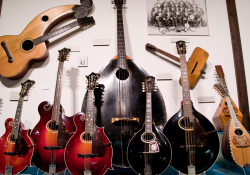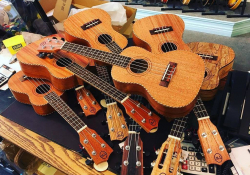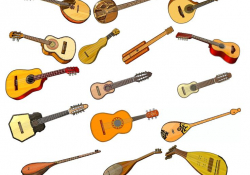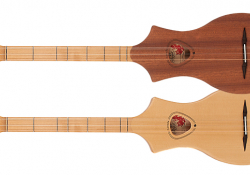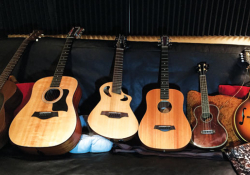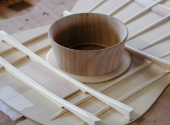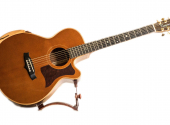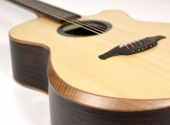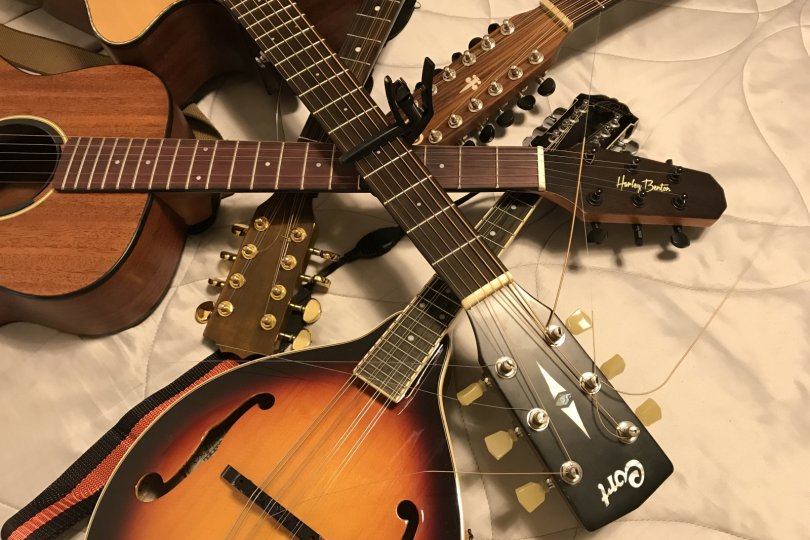
Laboratorium of Dr. Hyenik #3: Magic Ingredients
When you've mastered the basics of recording, you usually start thinking about how to layer other tracks and, more importantly, how to make the best overall sound. A cool trick to make any recording more sparkly, airy, fluffy, or perhaps upbeat is to double up the backing guitar parts in the higher registers... like sprinkling magic fairy dust on the song.
What's more, it's great that there are many ways to do this miracle, and everyone can choose their favourite one. Apart from playing inversions in the higher frets, one of the easiest is to tune up higher with a capo.
Capo
There is an infinite number of types, systems, materials and, nowadays, even colours of capos. To play on higher frets, I would recommend paying a little attention to choosing the appropriate radius (curvature of the fretboard). Stronger or adjustable pressure is also an advantage, as the demands for a clear sound without discord sounds and crackling rather increase with a higher pitch. A perfect example of this method's user is Ian Anderson of Jethro Tull (by far not only a dazzling flautist but also a very skilled guitarist). With a well-chosen arrangement, you can make a song really shine, albeit at the cost of probably more difficult tuning and having to transpose chordal fretting (e.g. you'll play A major as an E major with the capo on the fifth fret). Without transposition, the capo would have to be on the 12th fret, and you wouldn't be able to play above it much. But wait, there are 12-strings!
Twelve-string guitar
Yes, this is another way to get richer accompaniments, as for frequency, without having to transpose. The top two strings are doubled, and the other four have an octave higher string added, which produces an astonishingly natural chorus-like sound. Again, the more demanding tuning and the extra effort of squeezing chords are compensated for by an admirably rich sound, and, of course, it is also possible to use a capo. Except you need to be more careful when mixing this instrument as it essentially sounds like two guitars, so the midrange can easily get overwhelmed when combined with other guitars. Personally, I see the twelve's focus more in standalone use, or like in my last recording – in combination with a baritone guitar, where their spectrums complement each other perfectly. Twelve-string guitars are often used by folk guitarists, so it's not surprising that the so-called Nashville tuning was invented in the "capital of country music".
Nashville tuning
This tuning, also referred to as a high-strung tuning, wittily takes advantage of the strengths of the twelve-string guitar and reduces their drawbacks. The guitar is fitted with only the top strings of the twelve-string set, which sounds a bit odd on its own, but when combined with a normal guitar, they complement each other perfectly while both instruments still have plenty of space. It is very often used in country, bluegrass and worship music (which by its very nature is meant to uplift the spirit).
Apart from the need for another guitar, this tuning has only advantages. A special set of strings is cheap, and you can even use another trick and fit two guitars from one twelve-string set. A "Nashville" guitar might as well be made of some cheap plywood because it doesn't have to play deeper frequencies which are more demanding on transmission, so you can use pretty much any guitar for it. And the best part is that you don't have to relearn or transpose anything, just play the basic part exactly the same and still get a variation that is different in sound and feel. When I "rediscovered" Nashville tuning for myself years later, I immediately bought a cheap guitar, restrung it, and started making my choruses and other bits of unfinished projects charming. It's really cool, and the different sound is truly inspiring, so I definitely recommend trying it out.
Mandolin
Then it’s the mandolin’s turn, whose use is far from bluegrass chopping or soloing only. Just listen to Czech folk-rock superstar Vlasta Redl, for example, and you have a perfect example of how to sparkle the basic band sound. The advantage is that the mandolin is tiny, and it doesn't have to be a high-end instrument for this purpose, as the short scale length and the articulated sound of the arched body make the differences in sound minimum. For me, even a "piece of trash" for peanuts has served me well on more than one occasion. I wouldn't even be ashamed to use a solid-body electric mandolin (in fact, I just got one). Plus, you don't have to be a mando-virtuoso, just figure out a few transposition rules, fit your fingers into miniature frets – and work your magic. Youtuber samuraiguitarist gives tips on excellent mnemonic devices for quickly grasping chord changes.
Other instruments from the mandolin family
Wikipedia lists over 40 of them, so of course, you can use a mandola, octave mandolin, bouzouki, and I wouldn't be afraid to also include a lot of instruments from the lute family to spread the magic dust on your artwork. They differ in the number of strings and the scale length, but in principle, they are still similar in sound. I certainly would give a try to innovative variations of classic instruments, such as the modern dulcimer Seagull Merlin, or completely new creations like the fantastic Veillette Gryphon. But in the end, we should not forget the most feasible option.
Ukulele
Recently, there have been so many of them that you could easily build a ukulele orchestra. Anyone can choose one in any size version without getting bankrupt. In addition, its rather small size and different timbre (thanks to the nylon strings) are an advantage in our search for magic.
Producer Joe Gore has prepared a perfect summary of each variant, including sound samples, so you listen to and find out which "magic fairy dust" will enchant your particular ear. I often use it not only in acoustic music but also in the hard stuff, where it blunts the hardness a bit and helps the recording open up beautifully in tone colour.
And since Christmas is always just around the corner, get in the mood with my favourite Jethro Tull's subversive carol, where Ian Anderson works his magic with many of the above-mentioned techniques. Next time, we are going to take a look at endless sustain in our school of magic.
If you have found an error or typo in the article, please let us know by e-mail info@insounder.org.


